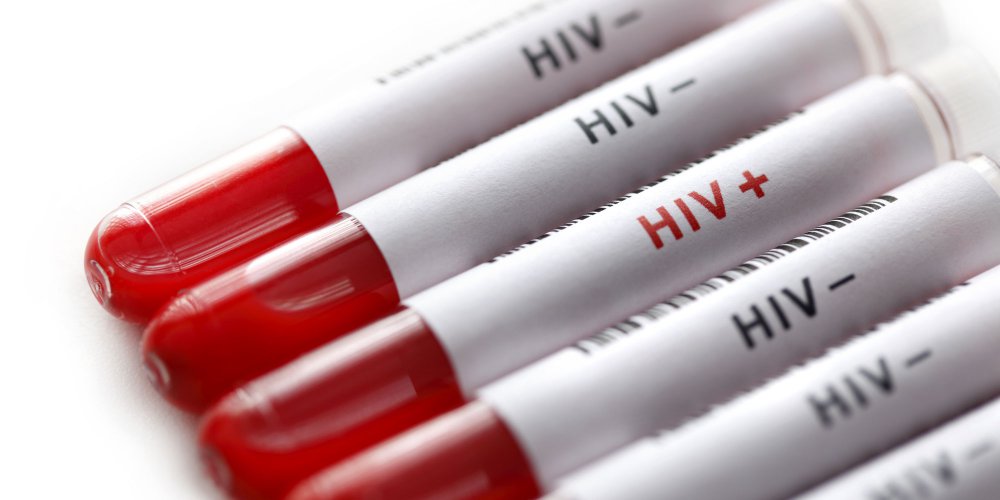According to the latest report from UNAIDS * (Joint United Nations Program on HIV / AIDS) "Ending AIDS: Moving Towards Targets 90-90-90" presented on July 20, 2017, "more than half of People with HIV (53%) now have access to HIV treatment, and AIDS-related deaths have decreased since 2005. "
In total, of the 36.7 million people living with HIV, 19.5 million had access to treatment in 2016 and AIDS-related deaths dropped from 1.9 million in 2005 to 1 million in 2016 .
The goal by 2020: that "90% of people with HIV know their HIV status, 90% of all people diagnosed with HIV have access to sustained antiretroviral therapy, and 90% of all people with access to treatment antiretroviral drugs are viro-inactivated. "
The opportunity to recall the main facts and figures about HIV, which still remains one of the main public health problems in the world, especially in low- and middle-income countries, as indicated by WHO.
- The means of transmission of the virus are multiple
It is possible to contract HIV in different ways:
- if you have unprotected sex (vaginal or anal sex) or oral sex with an infected person
- the mother transmits the virus to her child during pregnancy, childbirth or breastfeeding
- in case of contact with contaminated surgical equipment or other sharp or sharp instruments
- via blood transfusion or transplantation of contaminated tissue
- in case of exchange of contaminated solutions or injection equipment (needles or syringes) or contaminated material used for tattooing
- The disease, incurable, infects cells of the immune system
When you contract HIV, the infection affects the immune system. The body can no longer defend itself against infections and diseases. This is called AIDS when the disease reaches a very advanced stage , the moment when HIV infection triggers one of 20 opportunistic infections or one of the HIV-related cancers.
- More than 36 million people are infected worldwide
36.7 million people are living with HIV / AIDS worldwide. Of these, 2.1 million were infected with the virus in 2015.
In the same year, 1.1 million people died.
In France, there are 6000 new cases each year, according to the association Sidaction.
- About 1.6 million children have HIV
Nearly 160,000 [100,000- 220,000] children were infected with HIV in 2016.
Five countries are very affected: "Botswana, Namibia, South Africa, Swaziland and Uganda have already reached the stage of diagnosis and antiretroviral therapy for life for 95% of pregnant and lactating women with HIV," according to UNAIDS.
In 2015, WHO declared Cuba the first country to have eliminated mother-to-child transmission of HIV and syphilis. Results from comprehensive maternal follow-up: each HIV-positive woman had access to antiretroviral therapy and comprehensive antenatal care.
She is even offered scheduled delivery by caesarean section, to reduce the risk of transmission of the virus in the case of vaginal delivery.
A major breakthrough also validated in June 2016, in 3 other countries, Armenia, Belarus and Thailand.
According to Onusida, "nearly 76% of pregnant women with HIV had access to antiretroviral drugs in 2016, an increase of 47% since 2010."
- There is now emergency treatment after a risky relationship
To fight - or reduce - the viral load of the HIV / AIDS virus in the body of infected people, scientists have developed antiretroviral therapy . The goal ? Avoid the patient to infect his / her seronegative sexual partner.
In prevention, since January 2016, France proposes the molecule of Truvada in hospital. It can be prescribed to prevent HIV infection in the case of high-risk sex, which contributes to the prevention of infection.
- More than 19.5 million people are on antiretroviral therapy
A large majority of these infected people lived in low- and middle-income countries.
In order to maximize the chances of survival for people infected with the virus, in 2016 WHO published the second English edition of the "Unified Guidelines on the Use of Antiretrovirals for the Treatment and Prevention of HIV Infection" .
It contains several new recommendations, including the provision, independent of CD4 cell count, of life-long antiretroviral therapy for all children, adolescents and adults living with HIV, including all pregnant and lactating women, starting with as soon as possible after the diagnosis of the infection.
- People living with HIV will soon have access to funeral care
The ban on funeral care for deceased persons with HIV should be implemented in January 2018.
This measure will also affect people with hepatitis.
- There are many ways to prevent HIV transmission
- avoid having risky sex, ie use condoms as soon as possible
- to be regularly screened for sexually transmitted infections - especially if you change a sexual partner - and to be treated if necessary to avoid subsequent transmission to a sexual partner
- always use sterile syringes
- ensure that blood and blood products that may be needed are tested beforehand to detect the possible presence of HIV
- to apply for a voluntary male circumcision to a medical service if one lives in one of the 14 countries to promote this intervention
- if infected with HIV, start antiretroviral therapy as early as possible for self-interest and to prevent transmission of the virus to the sexual partner, to those who may use the same injection equipment or, in the case of pregnant or lactating women, to the child
- use pre-exposure prophylaxis before adopting high-risk behavior; request post-exposure prophylaxis if there is a risk of exposure to HIV infection in occupational or extra-professional settings
- Self-tests help to detect AIDS today
HIV self-tests are available in French pharmacies. With a drop of blood, the self-test provides a result in 15 minutes, against several days of waiting in a screening center.
However, it can not be a substitute for conventional screening (blood test), since it is not 100 % reliable, its result must be confirmed by a laboratory test.
* www.unaids.org/resources/documents/2017/20170720_Global_AIDS_update_2017




